Judges Would Wear Two Hats in Proposed Youth Court
The New York Law Journal by Jeff Storey - March 2, 2012
To the embarrassment of court officials and youth advocates, New York is one of only two states to set the age of criminal responsibility at 16. Now, momentum is building for a far-reaching change in the state's juvenile justice system, with an initiative by the courts joining a drumbeat of calls for reform.
As they crafted the 1962 act that created the Family Court, legislators discussed but could not reach agreement on whether to raise the age at which youths could be tried for crimes as adults. The lawmakers left the dividing line between juvenile delinquency and adult crime at 16, where it had stood since the late 19th century. But a legislative committee stressed that the decision was "tentative and subject to change" and urged that studies be done to reach a more permanent consensus. Fifty years later, New York state, to the embarrassment of court officials and youth advocates, is one of only two states to set the age of criminal responsibility at 16. Legislation has been introduced in the other—North Carolina—to raise the age to 18, although the measure apparently is stuck in committee. Of the other states, 37 and the District of Columbia set the age of criminal responsibility at 18, while 11 states use 17. Now, momentum is building for a far-reaching change in the state's juvenile justice system, with an initiative by the courts joining a drumbeat of calls for reform. Chief Judge Jonathan Lippman proposed in his State of the Judiciary message the creation of a new Youth Court that would apply what he calls a "Family Court approach" to offenses committed by 16- and 17-year-olds. A bill setting forth the details soon will be submitted to the Legislature. "This approach puts first and foremost an emphasis on rehabilitation for adolescents, rather than incarceration," the chief judge said in his message. "The present punitive approach turns children into hardened criminals and must be changed if we are to ensure a meaningful future for kids who find themselves in the throes of the justice system." Judge Lippman's proposal has been widely praised. However, the costs of achieving his goals has raised some initial concern. Stephen Acquario, executive director of the New York State Association of Counties, said he agrees with Judge Lippman that "the status quo is not acceptable. It's not helping anybody." But Mr. Acquario said he worries about the impact the new court would have on county probation departments and other agencies. "We must be realistic," he said. "This will require resources." New York City, which has more than half of the new court's potential caseload, has similar concerns about how to marshal services essential to a proposal it wants to succeed. "The city is working with Judge Lippman on a fresh approach for non-violent cases involving 16- and 17-year-olds that will increase access to services in a way that doesn't break the bank or strain already stretched resources," John Feinblatt, chief policy adviser to Mayor Michael Bloomberg, said in a statement.
Judges With Two Hats
In a September speech before the Citizens Crime Commission of New York City, Judge Lippman suggested that the cases of 16- and 17-year-olds go through Family Court, which is "equipped to intervene meaningfully" in young people's lives "before their troubles escalate into more serious criminality." He pointed out that the Family Court's "whole culture and guiding philosophy" is "to focus on the problems that are specific to children and young people." Ironically, however, Judge Lippman's new initiative would not be part of Family Court. Rather, specially trained judges in Supreme and County Court, so-called "superior" courts, would preside over the Youth Court—an unusual hybrid that would deploy what the idea's supporters say is the best of adult and family courts. Judge Lippman's plan would take a big step toward what reformers failed to accomplish 50 years ago. It would raise the age of criminal responsibility to 18 from 16 for youths who commit non-violent crimes—largely minor drug crimes and property offenses such as larceny, car theft and vandalism.

The cases of youths aged 7 through 15 who commit the same less serious offenses would remain in Family Court. Meanwhile, adolescents who commit violent felonies would remain in adult courts. Also, boys and girls as young as 13 who commit particularly heinous crimes such as murder would still be tried in adult superior courts, often in existing "youth parts" where convicted defendants face mandated lengthy sentences.
Arrests of 16- and 17-year-olds totaled 46,147 in 2010, 75 percent of them misdemeanors. All misdemeanor arrests would be moved to the Youth Court from the New York City Criminal Court, District Courts and town and village courts.
Of the remaining felony cases—about 25 percent of total adolescent arrests—37.3 are violent felonies and other serious crimes and would be excluded from the Youth Court.
Overall, the Youth Court-eligible caseload would have totaled 23,652 in the city and 17,981 in the state's 57 upstate counties if the court had been operating in 2010.
Keeping violent teens out of the new court will ease the concerns some people may have about its impact on public safety, said Richard M. Aborn, president of the Citizens Crime Commission, which has been campaigning for juvenile justice reform. "We drew a line that had not been drawn before," he said.
Many cases would not make it into court at all. Probation departments could, with the consent of victims, "adjust" the case of a 16- or 17-year-old and dismiss charges after a 120-day reporting period if the youth complies with whatever conditions the probation department imposes and completes whatever programs it prescribes. That option is currently available for younger offenders facing Family Court action but not for adolescents prosecuted as adults. Cases that are not adjusted would proceed to arraignment and adjudication in the superior courts. Since those courts are governed by the Criminal Procedure Law, adolescent defendants would retain rights, including bail and trial by jury, that are not available in Family Court. Once a verdict has been reached, the Youth Court judge would don her Family Court hat. She would have the discretion to craft the "least restrictive" available disposition consistent with "the needs and best interests" of the youths and the "need for the protection of the community"—a more lenient standard than that for adults under the Penal Law. Moreover, Judge Lippman has pledged that enhanced services and community programs that provide alternatives to incarceration, hallmarks of Family Court but less used in adult court, would be offered to adolescents. Finally, offenders' dispositions would be sealed to ensure that youths would not, in Judge Lippman's words, "be haunted for the rest of their lives" by a criminal record that stands in the way of education and employment. The court system already has assigned 15 judges to pilot adolescent diversion parts where they work closely with prosecutors and defense attorneys, probation officials, service providers and police (NYLJ, Feb. 2). Judge Lippman said in his message that the goals of the pilot courts are to demonstrate that his approach "makes sense and is a vast improvement over the existing system" and to serve as "a valuable testing ground" for techniques that could be used in the projected Youth Court. But he said in an interview that the courts' current structure limits what the state can do without changes in the law, and the pilot courts do not have the broad range of options that would be offered in the Youth Court. (The court system has not yet determined how many judges would work in the Youth Court and how many would be full time.)
Stress on Family Court
The outline of Judge Lippman's Youth Court emerged from months of study by the courts' Permanent Commission on Sentencing chaired by Acting Supreme Court Justice Barry Kamins and Manhattan District Attorney Cyrus Vance Jr. The commission and Judge Lippman decided early on that Family Court, already stressed by a large and difficult caseload, was not the right forum for thousands of additional troubled kids. Statewide, Family Court received only 12,142 original juvenile delinquency cases in 2010, less than one-third the number of older offenders who would be eligible for the Youth Court. Its youth-crime caseload would double or triple with the assignment of 16- and 17-year-olds to the court, although the exact increase would depend on the cases adjusted or diverted from the court system. The 16- and 17-year-olds "belong in Family Court," said Judge Edwina Richardson-Mendelson, administrative judge of the city Family Court, but she added that they could "not easily be accommodated" under current conditions. An influx of adolescent cases "would cripple the system," said Brooklyn Family Court Judge Stewart Weinstein. "That would not be justice for anybody." Judge Lippman said that his ultimate goal remains to shift the cases of adolescents to Family Court. He said that he has "complete confidence" in the ability of Family Court judges to effectively intervene with adolescents as they do with younger children. But for now, he said, "we're not going to let a decade of kids go down the drain" while officials marshal the resources—additional judges, support personnel and courtrooms—to do the job in Family Court. Right now, officials are focusing on the Youth Courts because they can be set up relatively quickly. However, while the general shape of the new court has been resolved, some issues remain to be addressed in the implementing legislation. One major sticking point is where to confine youths who would not benefit from the alternatives to incarceration. State and federal law prohibits the mixing of juveniles and adults in prisons and jails. But Judge Lippman and others have been sharply critical of the facilities where the state now confines juvenile delinquents.
Wide Support
The announcement of Judge Lippman's initiative was greeted as "a historic day for New York kids" by Michael A. Corriero, a former judge who presided over the cases of juvenile offenders (See Q&A on page 5 of the print edition of the Law Journal). Mr. Corriero is the founder and executive director of the not-for-profit New York Center for Juvenile Justice, which has advocated for a lower age of responsibility and worked closely with officials on plans for the new court. Mr. Corriero pointed out that support for juvenile justice reform has grown as juvenile crime has plummeted from the levels that encouraged harsh state measures in the 1980s and '90s. Moreover, studies of brain development and behavior have shown that adolescents should not be treated like 25- or 30-year-olds. "Science tells me they are kids," said Judge Lippman, a conclusion that he says will come as no surprise to parents of teenagers. The studies say that adolescents are immature, reckless, influenced by peers, and frequently ignorant of the consequences of their own actions. Moreover, Judge Lippman and others argue, since their characters have not been fully formed, they can benefit from the intervention and rehabilitation the Youth Court would offer. Justice Kamins said that many judges are enthusiastic about what they believe is a practical solution—a "uniquely New York solution"—to the problem of youth crime.
Acting Supreme Court Justice Anthony Ferrara in Manhattan said that the chief judge's plan offers "tremendous benefits" to children and the state if it is backed by sufficient resources. Justice Ferrara is presiding over a pilot adolescent diversion part with a caseload of subway turnstile jumping, petit larceny and marijuana possession. He said such adolescents have been rushed through the system with little attention being paid to their underlying problems or how to keep them from returning with more serious offenses. The pilot court, which meets one afternoon a week, gives the judge an opportunity to "talk to them about the mistakes they've made and why they've made them." Most adolescent defendants still will receive an adjournment in contemplation of dismissal, but Justice Ferrara maintains control long enough to "make an impression." And before their cases are closed, the adolescents will participate in programs ordered by the Midtown Community Court that give them "a sense of worth and responsibility," such as volunteering in a soup kitchen or teaching younger kids about bicycle safety. Mr. Vance, who is the president-elect of the New York State District Attorneys Association, said that the sentencing commission he co-chairs developed a "sensible" model "based on human experience and logic" offering "better outcomes" for adolescents caught in the criminal justice system. Prosecutors "know and understand that 16- and 17-year-olds cannot be treated in the same way as 25-year-olds," said Westchester District Attorney Janet DiFiore, the current president of the district attorneys association, adding that 94 percent of dispositions involving adolescents already are sealed. Ms. DiFiore said that members of her association are anxious to see the details of Judge Lippman's proposal. Providing "resources on the back end of these cases is very important," she said. Stephen Banks, attorney in chief of the Legal Aid Society, called Judge Lippman's proposal "a critically important initiative." The forum in which adolescents' cases are handled—adult or Family Court—is not as important as that judges have the authority to address their issues, he added. Bronx Family Court Judge Monica Drinane, a former attorney in charge of Legal Aid's juvenile rights practice, said that raising the age of responsibility is the "right goal. There are a lot of good evidence-based studies that show these are kids. We can't differentiate on the basis of age or size." She said she is "absolutely confident" that the new court "can be imbued with the spirit of Family Court."
Obstacles to Passage
Nevertheless, despite early across-the-board support for Judge Lippman's program, court officials recognize that the initiative could flounder in Albany if it is shown to be significantly more costly than the current arrangement. "We think it would be cost-neutral," Judge Lippman said. Court administrators observe that the youths who would be affected are already in the system, and argue that establishment of the Youth Court would simply be a matter of rearranging existing resources. "While costs may shift slightly overall, the plan's cost-effectiveness stems from the increase in adjustments and fewer cases entering the system, coupled with a decreased reliance on expensive incarcerations that, in many instances, serve no useful purpose for adolescents accused of low-level offenses," Judge Lippman said in his message. Officials say that a "great majority" of misdemeanor offenders could be "adjusted" out of the system, although they have no firm estimates. One clue might be found in the number of juvenile arrests that are adjusted now. Last year, New York City's Probation Department opened 4,669 cases for adjustment, 39 percent of juvenile delinquency matters referred to it. Some 89 percent successfully completed the supervision period. Judge Lippman acknowledged in his message that probation departments might experience additional costs from added adjustment cases. Rocco Pozzi, the Westchester County probation commissioner and a supporter of the new court, estimates that he would have to double the number of officers to 12 from six who screen and supervise the adjustment cases. And adolescents who are sentenced to probation after going through the court probably would require more intense supervision by probation officers with fewer cases, he added. "The philosophy is sound," said Mr. Pozzi. "It makes sense. It's just going to take a while." Judge Lippman predicts that any added probation spending would be canceled out by a reduction in assigned counsel expenses and other savings. He also is confident that services would become available for the 16- and 17-year-olds who enter the Youth Court. He said in an interview that the system already has developed a "patchwork" of programs for young offenders, and existing programs can be expanded to handle the added cases. "A lot of folks will be intrigued by [Judge Lippman's] idea. Service providers will run to be part of it," agreed Bill Baccaglini, executive director of the not-for-profit New York Foundling, which recently received a foundation grant to serve approximately 60 adolescent offenders. Judge Lippman said in his September speech that alternatives "do require an up front investment, and we will have to convince budget officials and legislators that the long-term benefits and savings will greatly outweigh initial costs." Mr. Baccaglini said that programs operated by his agency for juvenile delinquents cost $12,000 to $13,000 a year. The tab for incarceration is about $200,000. Whatever the obstacles to the new court, Judge Lippman expresses a sense of urgency. "This has been studied enough," he said. "We need to act. We're wasting kids' lives." Jeff Storey can be reached at jstorey@alm.com.





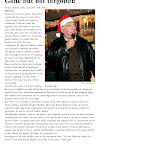

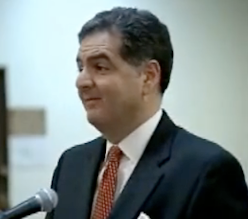
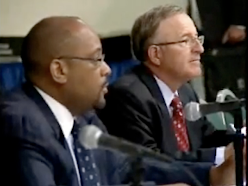
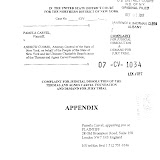
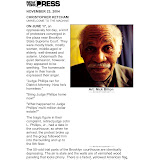
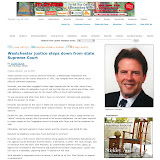
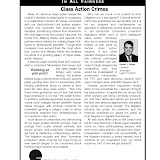

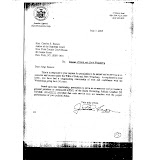
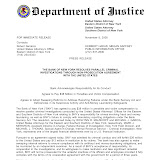
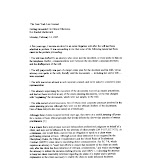

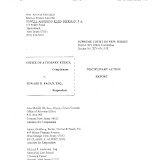
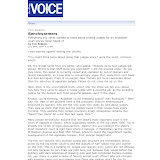

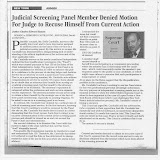

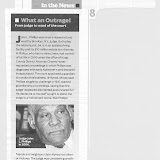
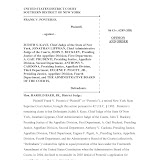
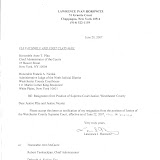
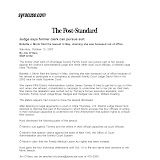
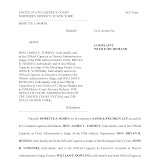

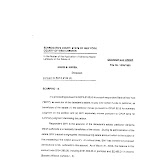
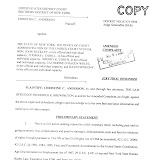
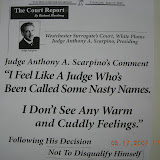

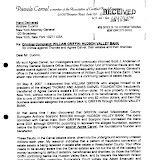
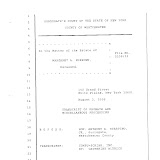
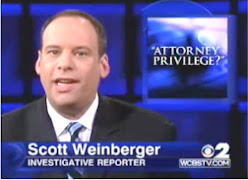

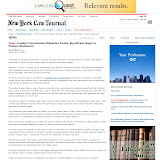
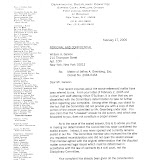
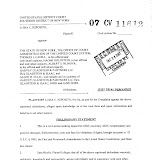
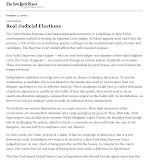
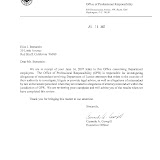
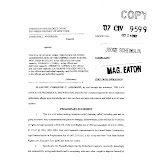
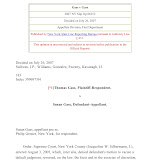
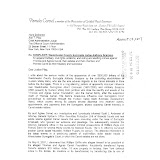

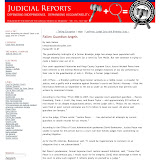
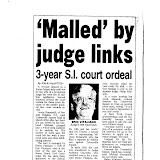

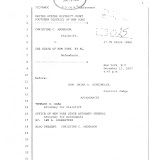
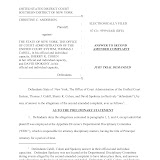
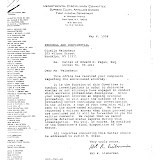
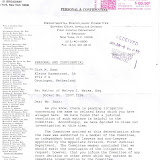
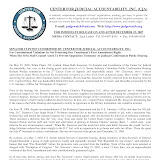
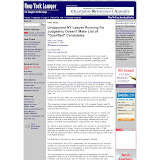
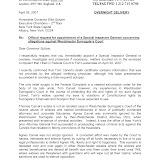
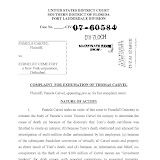
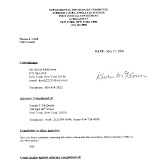
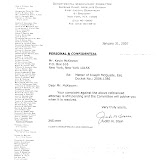
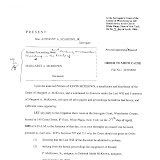
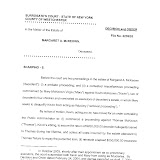

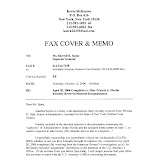
3 comments:
Who do we have to thank for this?
Judith Kaye, for not doing anything under her hapless rule? Or the string of hacks that presided over the New York Courts over the last 50 years?
OCA isa mess. Shut everything down and start over.
Another Lippman FIX!
Post a Comment